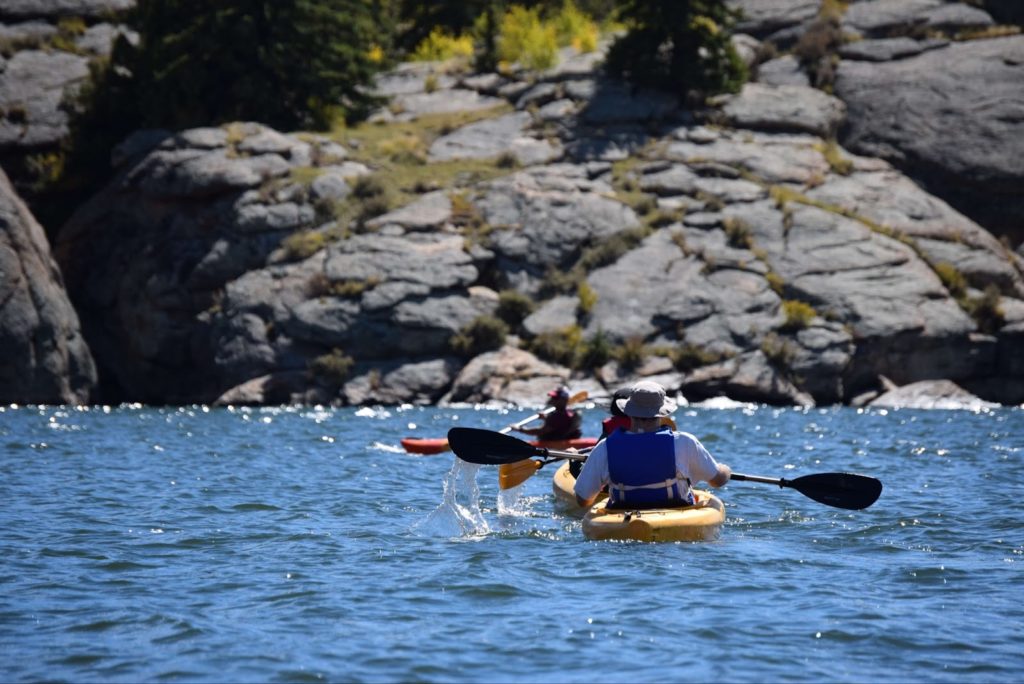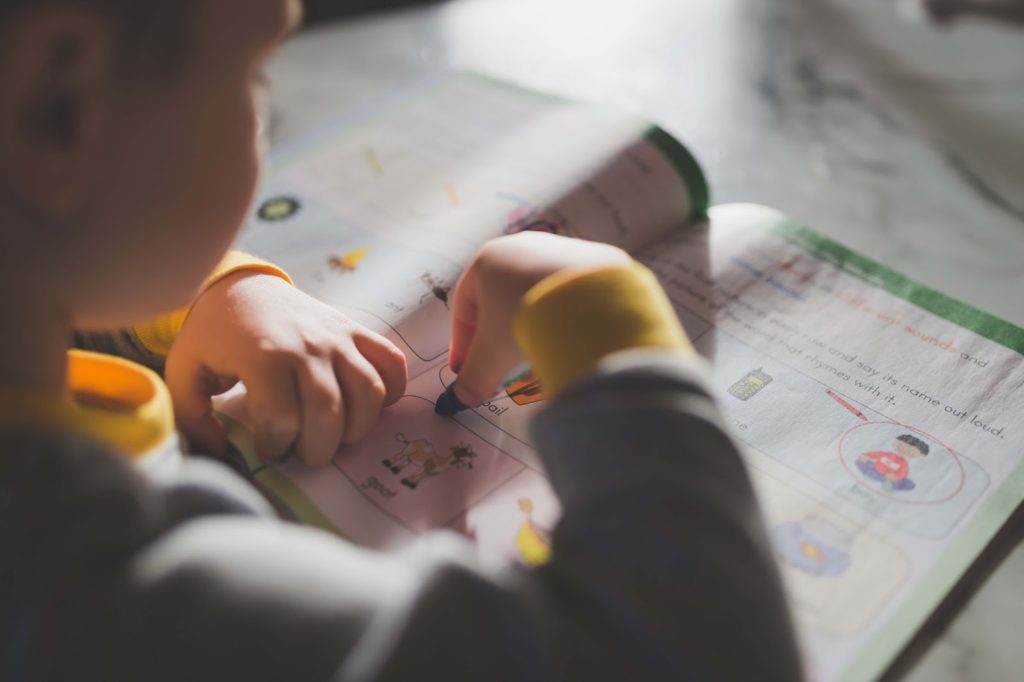Canoeing is an exciting sport that you can enjoy with kids. It can help improve their stamina, flexibility, and core strength. Continue reading to find out how you can safely go canoeing with kids.
Prerequisites to the Canoeing Trip
You must consider several factors before going canoeing with children. It is essential to research the best time and environment for the trip and pack the right equipment. This section will cover critical pieces of advice in preparation for your trip.
1. Create an Itinerary

An itinerary is essential to minimize potential issues, especially when traveling with young children. When it comes to canoeing, you must know when to reach your destination, when you should be in the water, when and where to have lunch or snacks, and when to start heading back home.
The idea of an itinerary is not to follow it strictly but to ensure that you are on track and leave enough time for critical points in your day. For example, planning when you need to go home can help ensure you have enough time to put away equipment and drive back.
2. Explain the Trip to the Children
After creating your itinerary, you must inform each child about your trip plan. Explaining helps make sure that they are prepared and help them get more excited about the trip. It can also minimize anxiety during travel and give them enough time to understand canoeing.
3. Pack the Right Items in Advance
Like when kayaking with kids, you must pack all the right tools and equipment for canoeing. The first thing you need is a floatation device. There should be enough for each person and one extra if possible.

If you choose to use a personal canoe and paddle, check them thoroughly to make sure there are no cracks and that they are durable. Prior checks will ensure that your boat will sit firm in deep water and that you can quickly move the boat during emergencies.
Children will require snacks throughout the trip, so you must bring a snack bag for each child with healthy and nutritious foods. They may need toys to entertain them in the boat and food. If your child has a security blanket or bear, you may wish to bring it along.
A canoeing trip with kids means you should go in times of good weather with low tide, wind, and rain. It is likely to be a cloudy or sunny day, so you must pack good sunscreen. Make sure to reapply your sunscreen periodically.
Additional items you pack for a canoeing trip with children depend on their needs. While there are basics such as safety equipment, a first aid kit, and light clothing, the other items rely on your and your group’s requirements. For entertainment, consider bringing a book or simple pen and paper so that your child can draw or write about the trip.
Safety in the Water

Safety should be the priority for any water sport, and it involves more than just having the right gear and inflation devices at hand. When it comes to providing a safe environment when canoeing, the first step is to coach the children about the sport.
Safety in the water begins with where you decide to go canoeing. Research in advance what the boat traffic is like, what other activities are going on in the lake, e.g., kayaking or paddleboarding, and whether the current will be weak or strong.
Basic Strokes
When it comes to paddling a canoe, there are basic strokes you need to learn to navigate efficiently. To feel more confident in the water, an older child would also benefit from learning how to go forwards, backward, and side to side.

The following are some strokes you can teach older children:
- J stroke
- Draw stroke
- Reverse J stroke
1. J Stroke
The J stroke enables you to propel your boat forward. This involves stroking your paddle on one side while going forwards. Start by performing a regular forward stroke. And when the top of the paddle shaft held by your opposite hand aligns next to your knees, twist your topmost control hand downwards while pulling it inwards.
2. Draw Stroke
This is a turning stroke that helps to pull your boat sidewards. Position your paddle next to you so that the flat part of your paddle faces outwards. Make sure that the topmost part of the shaft is pointing inwards.
The flat part of the paddle must be facing your waist while the other side faces towards the direction you want your boat to go. Place the paddle in the water and stroke the water inwards. Continue until you reach the required position.
3. Reverse J Stroke
A reverse stroke will move your boat backward without turning. Place your blade on one side of your boat. The paddle should be next to your torso, with the blade facing the front of your boat. Use your hands to push the blade forward so it strokes through the water.
Next, remove the paddle from that side and place it on the other side with the flat part of the blade facing the boat’s front and back, respectively. Stroke forwards to push the water towards the area that the front of the canoe is facing. Continue stroking forwards on each canoe side until you reach the correct location.
Fun and Games

If the children are engaged and having fun, it is much easier to keep them in line. If your child is between 2-5 years old, they will appreciate nature and the stunning views you are likely to see when canoeing. While the boat ride will be enjoyable, you may want to consider bringing other toys or fun gear.
A book is an ideal option since it is easy to carry and can occupy your child for an extended period. You may also wish to consider a fidget toy that will retain their attention. However, if you want to help them be more present, consider researching the area you will visit and putting together a small booklet of what they should see along the way.
A personalized booklet should have a list of pictures of sights, plants, and animals common to the area. Once the child sees an item, they can color a picture or tick a box on the booklet. As a result, they can better appreciate nature instead of getting lost in their Nintendo.
Conclusion
It is near effortless to enjoy a fun day canoeing with children. To help make your trip more enjoyable, you must plan thoroughly, especially when you intend to go canoeing with a very young child or multiple children. Learn the basic canoeing strokes, ensure safety is at the forefront and have a great time paddling.
FAQs
Where Is the Ideal Place to Go Canoeing With Children?
For children going canoeing for the first time, a populated area with natural shelter from the wind and rain is the best place. You must choose an accessible and safe body of water with a section where you can park your car and keep your equipment safe.
Is Canoeing Easy for Beginners?
It is relatively easy to learn canoeing for complete beginners if they have a good canoe and a durable paddle. However, it would be easier to have an instructor get the hang of the main strokes and how to navigate the water.
At What Age Can Children Go Canoeing?
Children typically begin canoeing as early as 2-5 years old. However, they should also come in the company of a trustworthy and capable adult. Going on a canoeing trip with a child or baby younger than two is not advisable since they require more immediate care and attention.
Is Canoeing Safe for Kids?
Canoeing is a safe activity for children, given that they have a buoyancy aid and a good swimmer nearby. It is also ideal for the child to be able to swim, or at least float. When canoeing with children, you should make them feel safe and comfortable by encouraging them and ensuring they have all the items they need.
Can You Go Canoeing With Toddlers?
Canoeing can be a fun activity for toddlers, given that you prepare beforehand. To go canoeing with toddlers, they have to be in the same boat with a strong swimmer, and they should have a personal floatation device at all times when near water. Canoes are typically big enough to fit more people and equipment, so you will likely have sufficient space for yourself, a toddler, and necessary gear.
